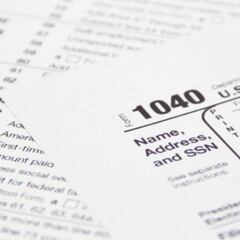IRS taxes: what is the 1040 form and what changes will it have compared to last year?
Tax season is here and many questions have to submit a 1040 to report additional income, deductions, foreign taxes. Here is everything you should know.


The IRS is now accepting tax returns and to avoid delays in receiving one’s refund encourages taxpayers to file as soon as possible. To ensure a timely return, the agency advises that you review the return thoroughly, file electronically, and provide the IRS with direct deposit information.
The 1040 form is used to report various sorts of income to the IRS.
Schedule A
What is a 1040 form?
- Additional Income: Such as unemployment compensation, prize or award money, gambling winnings.
- Deductions: Such as student loan interest deduction, self-employment tax, educator expenses.
Schedule B
What is a 1040 form?
- Owe Additional Taxes: ‘Such as self-employment tax, household employment taxes, additional tax on IRAs or other qualified retirement plans and tax-favored accounts, AMT, or need to make an excess advance premium tax credit repayment.’
Schedule C
What is a 1040 form?
- ‘Can claim any credit that you didn't claim on Form 1040 or 1040-SR, such as the foreign tax credit, education credits, general business credit. Have other payments, such as an amount paid with a request for an extension to file or excess social security tax withheld.’
Source: IRS
What is the Recovery Rebate Credit?
One of the most important uses of the form this year will be to claim the Recovery Rebate Credit which allows those who are eligible to claim the third Economic Impact Payment if they did not receive it in 2021.
Those who did not receive their third stimulus check worth $1,400 or parents who welcomed a new child after their payments were distributed can claim this credit.
The IRS recommends that those making less than $73,000 use their free electronic tax filing service to complete their return. For those eligible for the 2021 Recovery Rebate Credit, the IRS or any other tax filing service will have you complete Recovery Rebate Credit Worksheet on Form 1040.
Who else can claim the credit?
In addition to new parents, those who welcomed a new child "through adoption or foster care in 2021 are also encouraged to claim the child tax credit." By claiming them as a dependent, they may also be eligible to receive the full value of the child tax credit worth $3,600 for children under six, and $3,000 for those between six and seventeen.
Missing a stimulus payment? Find out how you may be eligible to claim a Recovery Rebate Credit on your #IRS tax return if you didn't get an Economic Impact Payment or got less than the full amount. See information at: https://t.co/MklF3sjI1F pic.twitter.com/H7lnFdzMcs
— IRSnews (@IRSnews) January 27, 2022
The IRS has also said that families may be eligible if they "added a dependent – such as a parent, a nephew or niece, or a grandchild – on their 2021 income tax return who was not listed as a dependent on their 2020 income tax return.
Since the distribution of the third stimulus check was based on a filer's 2020 tax return, some may be eligible if their incomes decreased in 2021. For example, a single filers who had an income "above $80,000 in 2020 but less than this amount in 2021" or "had incomes between $75,000 and $80,000 in 2020 but had lower incomes in 2021."
Related stories
For married couple who file jointly their eligibility depends on if they "had incomes above $160,000 in 2020 but less than this amount in 2021" or "had incomes between $150,000 and $160,000 in 2020 but had lower incomes in 2021."
Lastly, those who file as heads of household must have "incomes above $120,000 in 2020 but less than this amount in 2021" or "between $112,500 and $120,000 in 2020 but had lower incomes in 2021."

